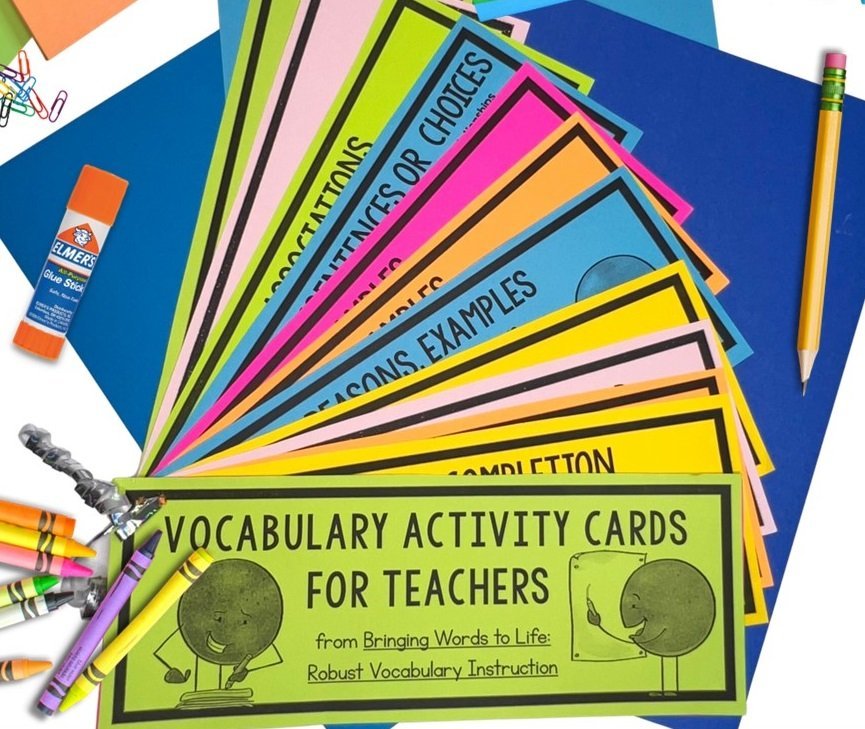
Do your students know the six traits of writing? Imagine this scenario…The day is going to be perfect. You’ve got an amazing lesson prepared for writing. You’ve pulled a wonderful mentor text, have stopping points mapped out, and your questions ready to roll. You have your students full attention, and all is clicking. And then you share the prompt you want your students to write about…duh, duh, duh…CLUNK! The looks become mixed. Some are still raring to go, while others look at you like you have two heads. And then, you hear it. “EXCUSE ME MRS. SO AND SO. I don’t know what to write! I’m stuck!” Well, the problem is real for your kids. In fact, for some, it may be a crisis moment, but I hope that you’ll read on for ways to work this out.
Six Traits: Generating Writing Ideas
Students need to begin with one central idea. That can be challenging for some because they’re overflowing with ideas, and for others, well, you already know how that played out. Clunk! As you begin with mentor texts, scaffold those who struggle and rein in those who have too many. Use exemplars to model of how the central idea unfolds in the book.
Writing ideas also depend upon the type of writing you are working on. Each type has a specific framework. With expository writing, students research a topic to find supporting information to support the main idea they wish to express. With persuasive writing, students need information to support their position. On the other hand, with narrative writing, a theme must be evident. Having ideas magically come to a child takes more than one amazing lesson.
To help students form ideas and feel more confident, there are things we can do to help. We can decide on a prompt or focus and utilize multiple ways to build schema or ways to brainstorm. To generate ideas, I have used word splashes, carousel brainstorm, alphablocks or ABC brainstorm, webbing, Venn diagrams, tree maps, and column notes to name a few. Some link to a blank form for teachers to print and use, but you can find lots of brainstorming organizers on the web with a quick search. This is really important for students who tend to “get stuck” in writing. Prior to beginning a writing assignment, teachers can also tell a story to get a story, use shared writing to model an example, or have additional mentor texts for students to look at with a partner who may also be “stuck” Below are a few book titles you might include.

Six Traits: Developing a Writer’s Voice
Voice shines through when a student expresses him/herself so that his/her personality shows through the writing. To address voice , the revising stage of the writing process is key. Mini lessons on using wow words vs. dead words and on figurative language (specifically work with idioms) can help students learn better ways to express themselves. You might even have partners read their writing outloud to better here if voice is present. Another great way to add voice is by using active verbs to help readers with imagery. The list of great mentor texts for voice is deep. These three are my favorites.

Six Traits: Organizing Your Writing
For many students, the thought of putting ideas into paragraphs is just a foreign concept. Sometimes, struggling kids feel like counting sentences is the way to write a paragraph. There are lots of models that can be used to demonstrate paragraph organization. You might have used the Hamburger Model, writing samples that match rubrics, or a structure like Four Square Writing. In order to help my students develop this skill, I’ve found the Four Square writing model very helpful for many writing types. At the beginning of the year, my students wrote in one continuous paragraph with no indentations and sometimes without end punctuation. Through lots of modeling and shared writing, the end products are changing.
Introducing Four Square Writing
Four Square Writing isn’t perfect for every type of writing, but I believe it’s best to teach one organizational plan at a time. Once your students have mastered using Four Square, then other organizational plans can be introduced later. For ways to introduce Four Square Writing, you can Google search it and find powerpoints that step through how it works.
To make sure my students follow their plan, I have them highlight the information as they add it to their papers. I also work with my students on use of transitional words and phrases. For younger students, posting time order words is helpful. Teachers may also find it helpful to provide students with assigned transition words or a framed paragraph that includes the transitions where the teacher wants the students to use them. With my students, I’ve used the scaffold approach in that I’ve provide transitional phrases, but as we’ve done additional pieces, I’ve gradually removed them for my students to take this over.

Six Traits: Modeling Sentence Fluency
The fourth trait of the six is sentence fluency, and for many struggling readers, this is probably the weakest trait. Struggling writers tend to write in a safe way. They stick with words they know how to spell and structure their sentences into short, simple sentences versus compound and complex sentences. Often struggling readers fail to vary their sentences too. How can we work on this? I believe this is where shared writing works well. Mini lessons on using figurative language, varying sentence structure, using dialogue, spacing, and even on how students might add details. Using your students writing for mini lessons on how to revise helps them to see how small modifications can make a big difference in how a paper reads.

Modeling Word Choice
Trait number five, Word Choice, is one of my favorites. I have really enjoyed working with my students this year on using vivid vocabulary, active versus passive language, adjectives, and adverbs. Mentor texts that model excellent word choice have lots of Tier 2 words, and by using read alouds to work on vocabulary, we’re actually taking care of two needs at once. To assist students, teachers can utilize the thesaurus with mini lessons on replacing dead words, give students access to either personal dictionaries or word walls devoted to Wow Words. Gay Miller has a wonderful freebie available on Teachers Pay Teachers, and many resources for Word Choice are available on her website too. My picks for Word Choice mentor texts are below.

Teaching Writing Conventions
The last trait, Writing Conventions, includes work on spelling, punctuation, use of dialogue, comma usage with clauses, and this type of thing. Teaching writing conventions as grammar mini lessons during writer’s workshop helps students be aware of conventions they should include.
How to Teach the Writing Traits
Building strong writers comes gradually, and with great modeling and shared writing opportunities, mini lessons, assistance with revisions, inclusion of rich texts and read alouds, support systems such as the personal dictionaries and word walls, and constructive feedback as papers are completed, all students can become strong writers (and readers).

Other Related Posts:
- Using the Six Traits for Writing Instruction: Mentor Texts for Teaching Voice
- Six Of The Best Mentor Texts For Developing Voice
- Six Traits in the Primary Grades
















